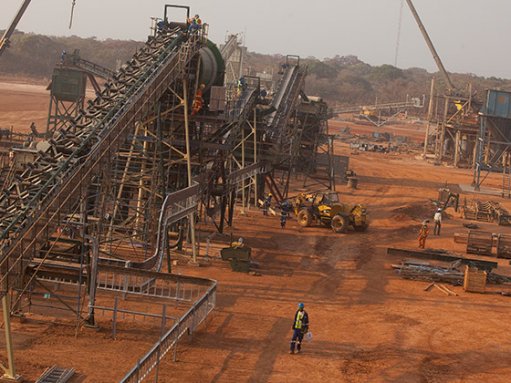
GROWTH OPPORTUNITY Economic growth can be increased through infrastructure development in the Central African Copperbelt
While copper prices are currently depressed, there is still significant development potential for the Democratic Republic of Congo’s (DRC’s) copper industry, says mining consultancy SRK Consulting corporate consultant and chairperson Roger Dixon, who explains that the valuable Central African Copperbelt spans the DRC and established copper producer Zambia, which means that both countries mine from the same orebody.
Last month, current affairs magazine The Africa Report stated that the DRC’s State-owned copper and cobalt company, Gécamines, planned to produce 100 000 t of copper by 2015, after the mining company had received a commercial mandate from government to reform, in 2010. Company managers then implemented a programme that should put Gécamines on the map as a major copper producer once again.
“The company has 23 partnerships, eight of which currently produce ore. With a $270-million loan from the Development Bank of Southern Africa, which was awarded in August 2012, Gécamines has been spending money to improve its projects,” adds The Africa Report.
SRK Consulting principal mining engineering consultant Boniface Mwila notes that these kinds of developments currently taking place in Central Africa’s copper mining industry can offer substantial benefits for the region, ranging from employment opportunities to housing, schools, clinics and recreational facilities.
“However, the availability of infrastructure for the development and operation of mining projects remains a major challenge,” says Dixon.
“Electric power is not always readily and consistently available, so companies resort to expensive diesel generation. The industry could benefit from additional power-genera- tion capacity and the expansion of feeder road networks, for instance,” he adds.
As a result of expensive and unreliable electrical power supply from the national grid, Mwila says, some of the major mining companies operating in the region are partnering with government to become self- sufficient. However, he highlights this as an expensive process of investing in business support systems for individual companies.
Dixon adds that the lack of transport infrastructure in Central Africa delays the delivery of material and equipment, ultimately delaying project schedules. Transporting copper cathode to ports for export purposes is also arduous and creates its own security issues.
“On a positive note, however, mining companies usually improve the road infrastructure in areas surrounding their opera- tions, which benefits businesses and communities. On a national level, mining operations will provide the much-needed taxes for the country’s expenditure on infrastructure development projects.
Meanwhile, Mwila high- lights that, with almost all the input materials used at mining operations being imported, a significant opportunity for growth of service industries in the region is not being taken advantage of.
“If local businesses were able to supply more of the materials and equipment that mining companies needed, then the mining industry could have more impact on economic growth,” he points out.
Dixon mentions that copper mining in Central Africa stimulates the potential to use local skills, which will counter the Africawide problem of an intra-Africa brain-drain, whereby citizens migrate for economic reasons. Therefore, the copper sector can possibly nurture and promote local expertise as a vital contribution to economic growth.
With this in mind, Dixon points out, the Zambian and DRC governments can contribute to the reduction of overall production costs by creating the environment that promotes the use of local businesses and skills and the development of infrastructure.